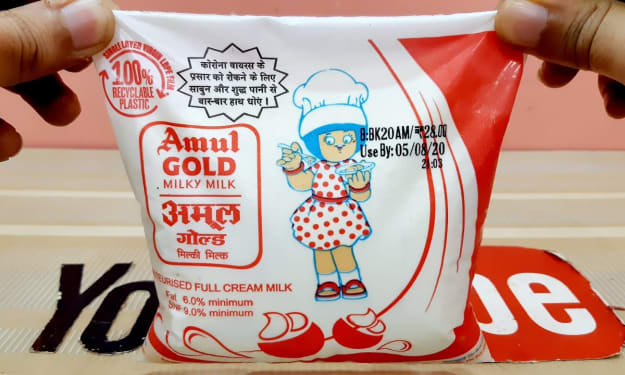The Nestlé company history
Our history begins in 1866, with the foundation of the Anglo-Swiss Condensed Milk Company. Henri Nestlé develops a breakthrough infant food in 1867, and in 1905 the company he founded merges with Anglo-Swiss, to form what is now known as the Nestlé Group. During this period cities grow and railways and steamships bring down commodity costs, spurring international trade in consumer goods.

US brothers Charles and George Page help establish Anglo-Swiss Condensed Milk Company. Using abundant supplies of fresh milk in Switzerland, they apply knowledge gained in their homeland to establish Europe’s first production facility for condensed milk in Cham. They start supplying Europe’s industrial towns with the product under the Milkmaid brand, marketing it as a safe, long-life alternative to fresh milk.Nestlé’s founder, German-born pharmacist Henri Nestlé, launches his ‘farine lactée’ (‘flour with milk’) in Vevey, Switzerland. It combines cow’s milk, wheat flour and sugar, and Nestlé develops it for consumption by infants who cannot be breastfed, to tackle high mortality rates. Around this time he starts using the now iconic ‘Nest’ logo.
Nestlé’s founder, German-born pharmacist Henri Nestlé, launches his ‘farine lactée’ (‘flour with milk’) in Vevey, Switzerland. It combines cow’s milk, wheat flour and sugar, and Nestlé develops it for consumption by infants who cannot be breastfed, to tackle high mortality rates. Around this time he starts using the now iconic ‘Nest’ logo.Henri Nestlé sells his company and factory in Vevey to three local businessmen. They employ chemists and skilled workers to help expand production and sales.Fierce competition develops between Nestlé and Anglo-Swiss, when both companies start selling rival versions of the other’s original products: condensed milk and infant cereal. Both firms expand sales and production abroadIn 1882 Anglo-Swiss expands into the US, but the death of George Page frustrates its plans. In 1902 it sells its US-based operations, which paves the way for an eventual merger with Nestlé.Nestlé begins selling chocolate for the first time when it takes over export sales for Peter & Kohler. The Nestlé company also plays a role in the development of milk chocolate from 1875, when it supplies his Vevey neighbour Daniel Peter with condensed milk, which Peter uses to develop the first such commercial product in the 1880s.
In 1905, Nestlé & Anglo Swiss has more than 20 factories, and starts using overseas subsidiaries to establish a sales network that spans Africa, Asia, Latin America and Australia. As World War One approaches, the firm benefits from the period of prosperity known as the Belle Époque or ‘Beautiful Age’, and becomes a global dairy company.Anglo-Swiss and Nestlé merge to form the Nestlé & Anglo-Swiss Milk Company. The company has two head offices, in Vevey and Cham, and opens a third office in London to drive dairy export sales. Over several years the company expands its range to include unsweetened condensed milk and sterilised milk.
Survival during wartime
The outbreak of war in 1914 leads to increased demand for condensed milk and chocolate, but a shortage of raw materials and limits on cross-border trade hamper production for Nestlé & Anglo-Swiss. To solve this problem, the company acquires processing facilities in the US and Australia, and by the end of the war it has 40 factories.War breaks out across Europe and disrupts production for the company, but hostilities also drive demand for Nestlé dairy products, in the form of large government contracts.Condensed milk is long-lasting and easy to transport, which makes it popular with armed forces. For example, in 1915 the British Army starts issuing Nestlé canned milk to soldiers in their emergency rations. Strong demand for the product means that the company’s milk refineries are working flat out.Condensed milk is long-lasting and easy to transport, which makes it popular with armed forces. For example, in 1915 the British Army starts issuing Nestlé canned milk to soldiers in their emergency rations. Strong demand for the product means that the company’s milk refineries are working flat out.Milk shortages in Switzerland mean that Nestlé & Anglo-Swiss has to surrender fresh milk supplies to help people in towns and cities. To meet demand for condensed milk from the warring nations, the company buys US refineries and signs supply agreements with Australian companies, which it later acquires.





Comments
There are no comments for this story
Be the first to respond and start the conversation.